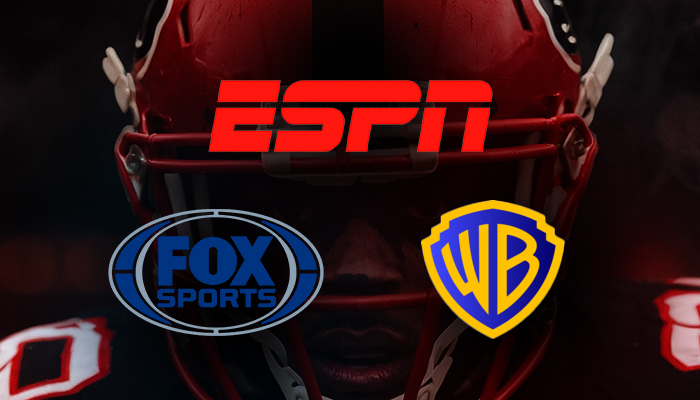How Streaming Services Changed Sports Broadcasting
 Sports Streaming Services
Sports Streaming Services
Since the early days of television, sports have been broadcast to audiences across the USA. As information technology has evolved, sports streaming services are quickly being embraced as the preferred way for fans to watch their favorite sports. But how did we get here, and what does the future like for sports in the digital age? In this guide, we’ve discussed how sports streaming has not only influenced how games are consumed but also the sports themselves.
Intro to Live Sports Streaming Services
Sports streaming is only a relatively recent advancement in broadcasting, and we are in the early days of what is set to be a monumental shift in how events are offered to fans. To begin this guide, we’ve looked at the history of sports broadcasting and streaming, before sharing the most popular streamers in the USA. We’ve then looked at how traditional broadcasters are being challenged by the new technology, and what impacts it is already having on audiences and the sports.
- ⏰ History of Sports Broadcasting & Streaming
- ✔️ Top Free Sports Streamers
- 📱 Most Popular Sports Streaming Services
- 📺 Challenges for Traditional Broadcasters
- 🫵 Impacts on Sports Audiences
- 🏎️ Impacts on Sports
The History of Sports Streaming Services and Broadcasting
The first sport to be broadcast on US television was a college baseball game in 1939. Since then, viewers across the nation have had access to major professional league sports, international events, and niche competitions. As technology has improved, so too has the way sports are filmed and distributed.
In 2002, Major League Baseball became the first US league to stream a regular season game online. While the live streaming technology was hampered by primitive broadband technology, the advent of high-speed internet and WiFi made sports streaming more accessible. One of the earliest streamers was ESPN360, which began to focus on live content in 2007.
Initially, the site only showcased a small selection of sporting events among other sports-related content, but over the years, other sites debuted to offer dedicated sports streaming. Now, several major media companies offer live sports streaming services with exclusive licensing deals, and the market is considered to be the next frontier in the streaming wars.
Sports content can now be viewed through smartphones, tablets, laptops, computers, and smart TVs, which has changed the capabilities of content that can be viewed. Even some of the biggest sports betting sites offer live sports streams, allowing bettors the opportunity to wager while viewing their favorite sports. Meanwhile, TV viewership figures have been dropping for sports.
The Rise of Free Streaming Services for Sports
There are only a few legal sports streaming services that offer free games, and these are usually much more restricted than paid services. One of the most popular is ESPN, which showcases games from sports that it holds licensing agreements for those who don’t have a paid subscription.
You will also be able to log into free streaming services for sports such as Fubo, NBC Sports, Fox Sports, and Red Bull to watch a great selection of sports. Like with ESPN, the options are limited, so in most cases you will want to subscribe to access the latest content and enjoy on-demand viewing of previous sports events.
Most Popular Sports Streaming Services
Several sports streaming services offer high-quality sports coverage, including both live streams and on-demand content. Perhaps the best option for fans of the Big Four US Leagues is Fubo. Not only can you stream NFL, NBA, NHL, and MLB games, but there is also a great selection of NASCAR, MLS, and international soccer events.
Keep in mind that to access the full suite of sports, you may have to pay a premium. Some live sports streaming services that are particularly good for different leagues due to exclusive partnership agreements. One such example is Apple TV, which recently partnered with the MLB to offer Friday Night Baseball coverage with exclusive commentary.
The following are the most popular sports streamers in the USA:
| Fubo | Peacock |
|---|---|
| ESPN+ | Apple TV |
| YouTube TV | Amazon Prime Video |
| Paramount+ | NFL+ |
| Hulu | Sling TV |
Challenges for Traditional Sports Broadcasters
One of the biggest challenges facing traditional broadcasters of sports is the shifting behaviors in demographics. A 2022 survey by Amere Analysis revealed that 37 percent of respondents between 18 and 64 only watched sports through streaming services, while only 21 percent preferred traditional networks.
A 2024 survey by YPulse found that 82 percent of Gen Z respondents watched events through streaming services with sports, while only 44 percent viewed sports through live TV. With ESPN, Fox, and HBO Max set to merge their streaming to provide broader access to sports, this could lure more away from traditional broadcasters.
That said, sports is considered to be a major attraction for audiences for broadcast TV. A Nielsen report in 2022 found that 94 of the most popular 100 programs shown on broadcast TV were sports, while it was 69 out of 100 for cable TV. Furthermore, one-third of TV ad revenues are generated through live sports programming.
If the trend toward online streaming services were to continue, this could threaten a major revenue source for broadcast TV networks. Another major threat to the industry is the use of illegal streaming services.
Illegal Streaming Services
Since the rise of the internet, online piracy has been a major disruptor of media companies’ revenues. Illegal sports streaming services are sites that host streams of sporting events despite not holding the appropriate licensing, giving viewers access to a full suite of local and international events without paying subscription costs.
It is estimated that illegal streamers cost legitimate streaming sites over $30 billion per year. While these sites may advertise as free streaming services for sports, they have a detrimental impact on your favorite sports teams. These sites are also notorious for phishing scams and viruses and are not guaranteed to be safe.
Impact of Modern Sports Streaming on Audiences
The advent of sports streaming services has had a profound impact on audiences due to the sheer volume of events that can be viewed. Now, viewers have easy access to a huge trove of recent and historical games that can be enjoyed, allowing audiences to relive iconic sporting moments of the past.
Viewers also now have greater access to international sports, which ensures that there is always something new to watch. Digital capabilities allow viewers to access more features and insights into games. In particular, the implementation of social media has also been popular with Gen Z viewers.
Many sites are now creating short-form highlight reels of games, which appeals to young demographics that may not have the time to watch entire events. When the new “mega-streamer” service from Disney, Warner Brothers, and Fox is released, this will give users unprecedented access to an array of local and international sports leagues all in one place.
How Sports Streaming Has Impacted Sports
It’s interesting to note that the world’s largest and most popular content streamer, Netflix, had long avoided entering the full-scale sports streaming market. While 2023 saw the company provide live streams of golf with The Netflix Cup and tennis with The Netflix Slam, it’s its exclusive licensing agreement with WWE that has indicated that it’s serious about competing with sports streaming services.
Outside of these live models though, Netflix’s streaming of sports-focused reality shows has had a huge impact on its portrayed leagues. For example, its Formula 1 show, Drive to Survive, has seen viewership figures for the sport explode. US audience figures for F1 have more than doubled since 2019, which is the year the show debuted.
Netflix later tried to reproduce its success for tennis with the show Break Point, but this was met with disapproval by several tennis players. Some claimed that the filming process was distracting and negatively impacted their performances, while others have stated that the show was staged.
While both have had different outcomes, it’s clear that streaming services with sports can have both a positive and negative impact on the depicted sports, so it will be interesting to see how this plays out as the market evolves.




